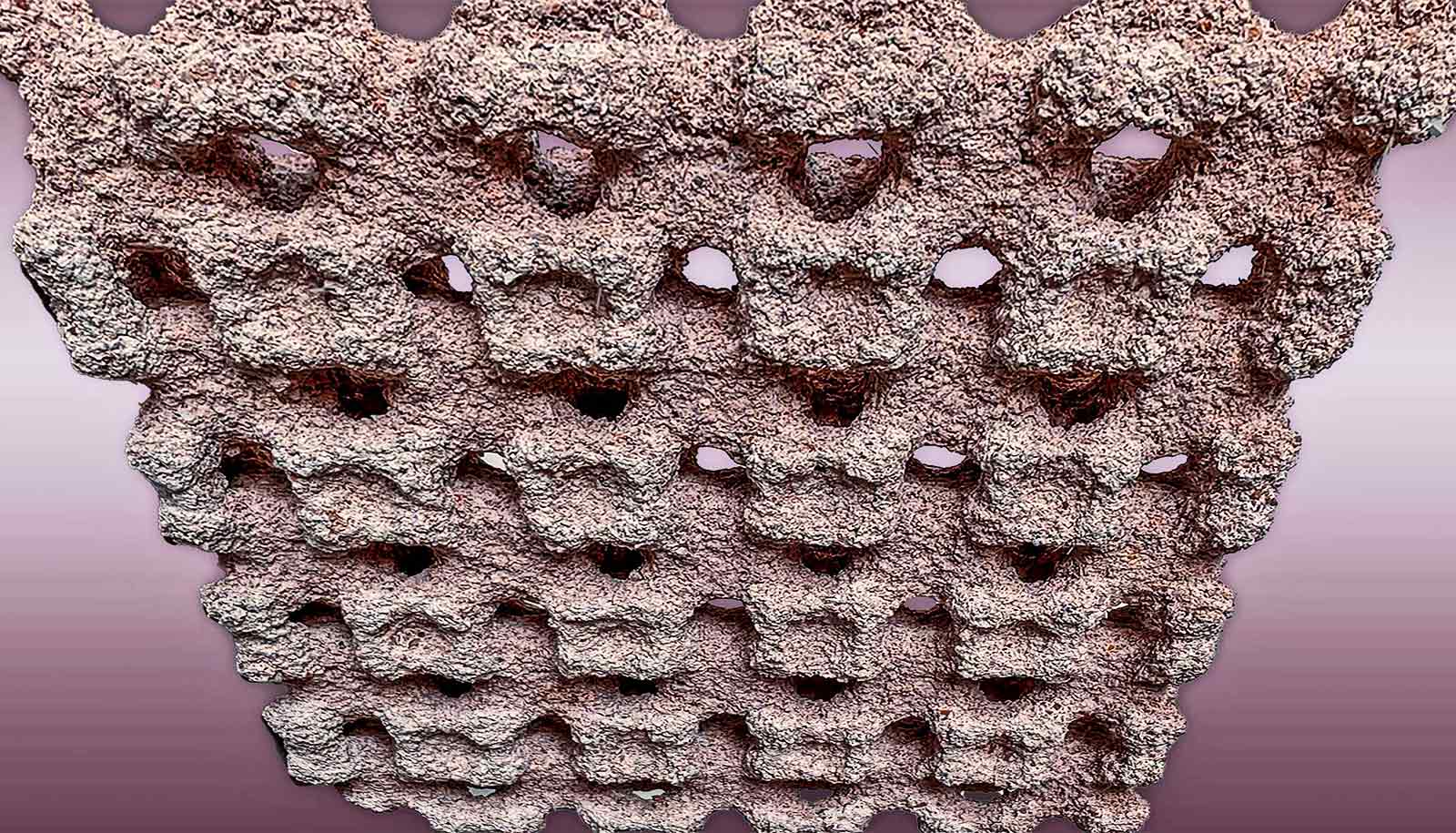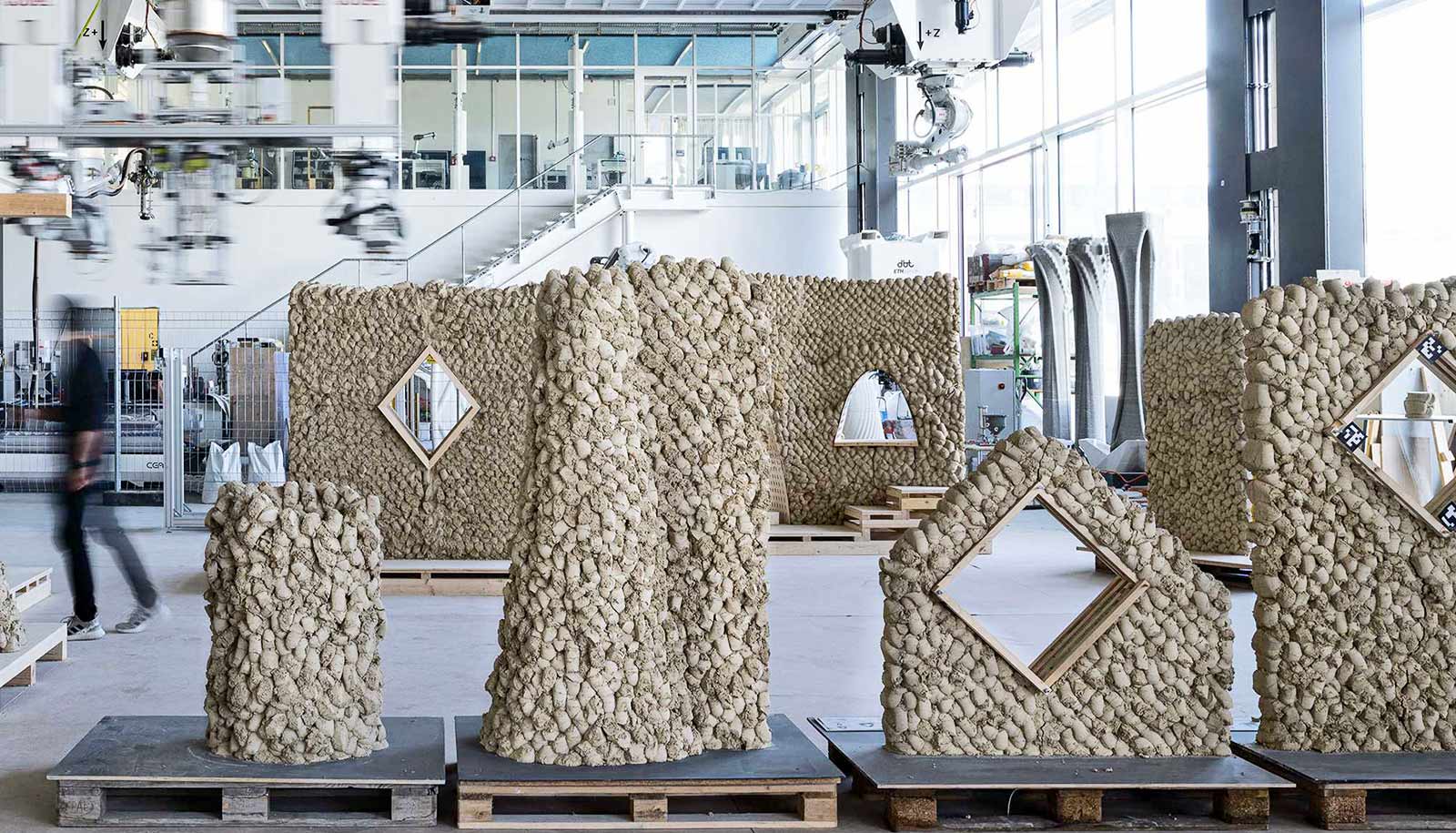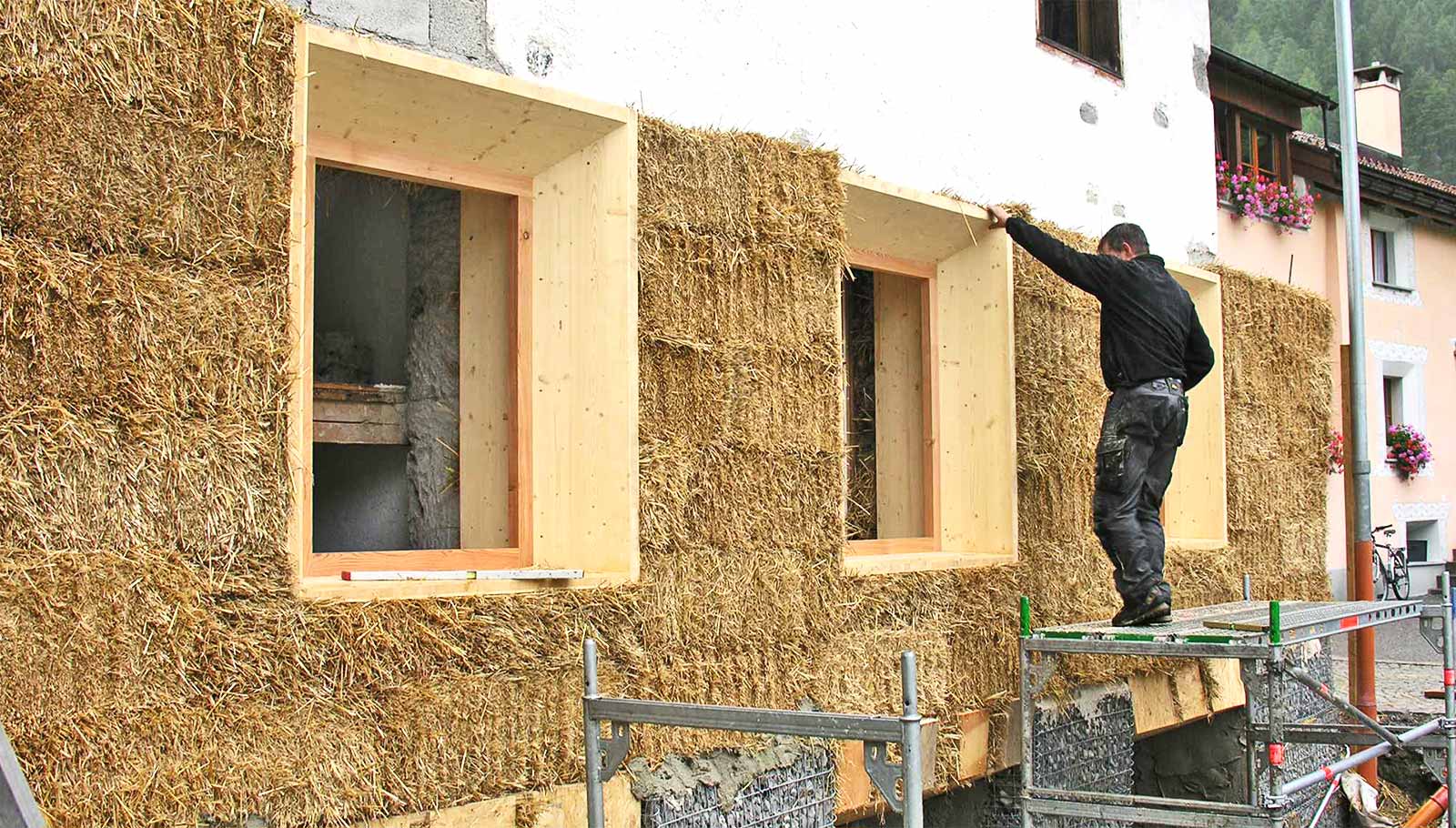Researchers have developed a climate-friendly covering for walls and ceilings that temporarily stores moisture, creating a comfortable environment in heavily used indoor spaces.
Whether it’s the meeting room of an office building, the exhibition room of a museum, or the waiting area of a government office, when many people gather the air becomes thick. This is partly due to the increased humidity.
Ventilation systems are commonly used in office and administrative buildings to dehumidify rooms and ensure a comfortable atmosphere. Mechanical dehumidification works reliably, but it costs energy and—depending on the electricity used—has a negative climate impact.
Against this backdrop, a team of researchers investigated a new approach to passive dehumidification of indoor spaces.
Passive, in this context, means that high humidity is absorbed by walls and ceilings and temporarily stored there. Rather than being released into the environment by a mechanical ventilation system, the moisture is temporarily stored in a hygroscopic, moisture-binding material and later released when the room is ventilated.
“Our solution is suitable for high-traffic spaces for which the ventilation systems already in place are insufficient,” says Guillaume Habert, professor for sustainable construction at ETH Zurich, who supervised the new research project.
Made from waste
Habert and his research team followed the principle of the circular economy in their search for a suitable hygroscopic material.
The starting point is finely ground waste from marble quarries. A binder is needed to turn this powder into moisture-binding wall and ceiling components. This task is performed by a geopolymer, a class of materials consisting of metakaolin (known from porcelain production) and an alkaline solution (potassium silicate and water).
The alkaline solution activates the metakaolin and provides a geopolymer binder that binds the marble powder to form a solid building material. The geopolymer binder is comparable to cement but emits less CO2 during its production.
In the new project, the scientists succeeded in producing a prototype of a wall and ceiling component measuring 20 × 20 cm and 4 cm thick. Production was carried out using 3D printing in a group led by Benjamin Dillenburger, professor for digital building technologies.
In this process, the marble powder is applied in layers and glued by the geopolymer binder (binder jet printing technology).
“This process enables the efficient production of components in a wide variety of shapes,” says Dillenburger.
Cutting humidity indoors
Combining geopolymer and 3D printing to produce a moisture reservoir is an innovative approach to sustainable construction.
Building physicist Magda Posani led the study of the material’s hygroscopic properties at ETH Zurich before recently taking on a professorship at Aalto University in Espoo, Finland. The project is based on the doctoral theses of materials scientist Vera Voney, supervised by senior research associate Coralie Brumaud and architect Pietro Odaglia, who developed the material and the 3D printing machine at ETH.
“We were able to demonstrate with numerical simulations that the building components can significantly reduce humidity in heavily used indoor spaces,” says Posani, summarizing the main result of the research project.
For the simulation, it was assumed that the walls and ceiling of a reading room used by 15 people in a public library in Oporto, Portugal had been completely lined with hygroscopic components. Posani calculated how often and to what extent the humidity exceeded the comfort zone, i.e. 40 to 60% relative humidity in this virtual reading room over the course of a year.
From this, she calculated a discomfort index, a figure that expresses the loss of comfort caused by excessively high or low humidity. If the reading room were fitted with the moisture-binding components, the discomfort index could be reduced by 75% compared to a conventional painted wall. If components were used that were 5 cm thick instead of just 4 cm, the discomfort index fell by as much as 85%.
Move over, ventilation systems
The hygroscopic wall and ceiling components are climate-friendly, i.e. they cause significantly lower greenhouse gas emissions over a 30-year life cycle than a ventilation system that dehumidifies air quality to the same extent.
In the simulation calculations, the wall and ceiling components were also compared with a clay plaster that has been used since time immemorial and also passively regulates the air humidity in indoor spaces. This old technique proved to be even more climate-friendly than the hygroscopic components. However, the plaster has a lower storage capacity for water vapor.
The research shows that the combination of geopolymer and 3D printing can be used to produce wall and ceiling components for efficient moisture buffering. After this proof of concept, the technology is, in principle, ready to be further developed and scaled for industrial manufacture. At the same time, research continues.
In a project with Turin Polytechnic and Aalto University, ETH Zurich is working to produce wall and ceiling components with even lower greenhouse gas emissions.
The research appears in Nature Communications.
Source: ETH Zurich



